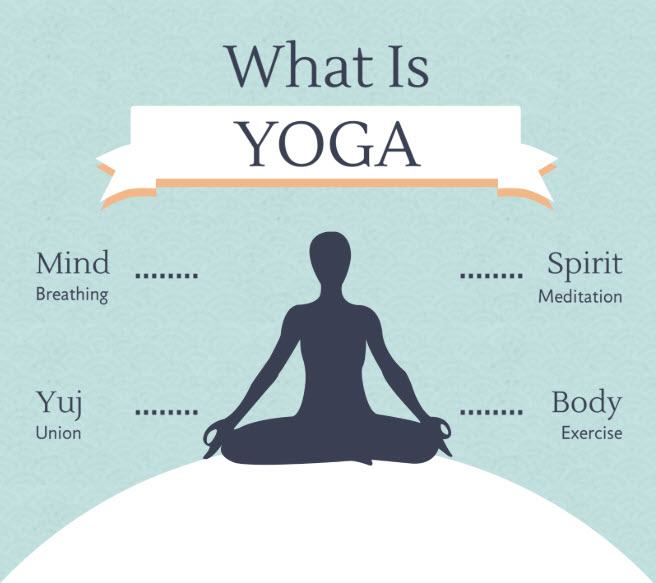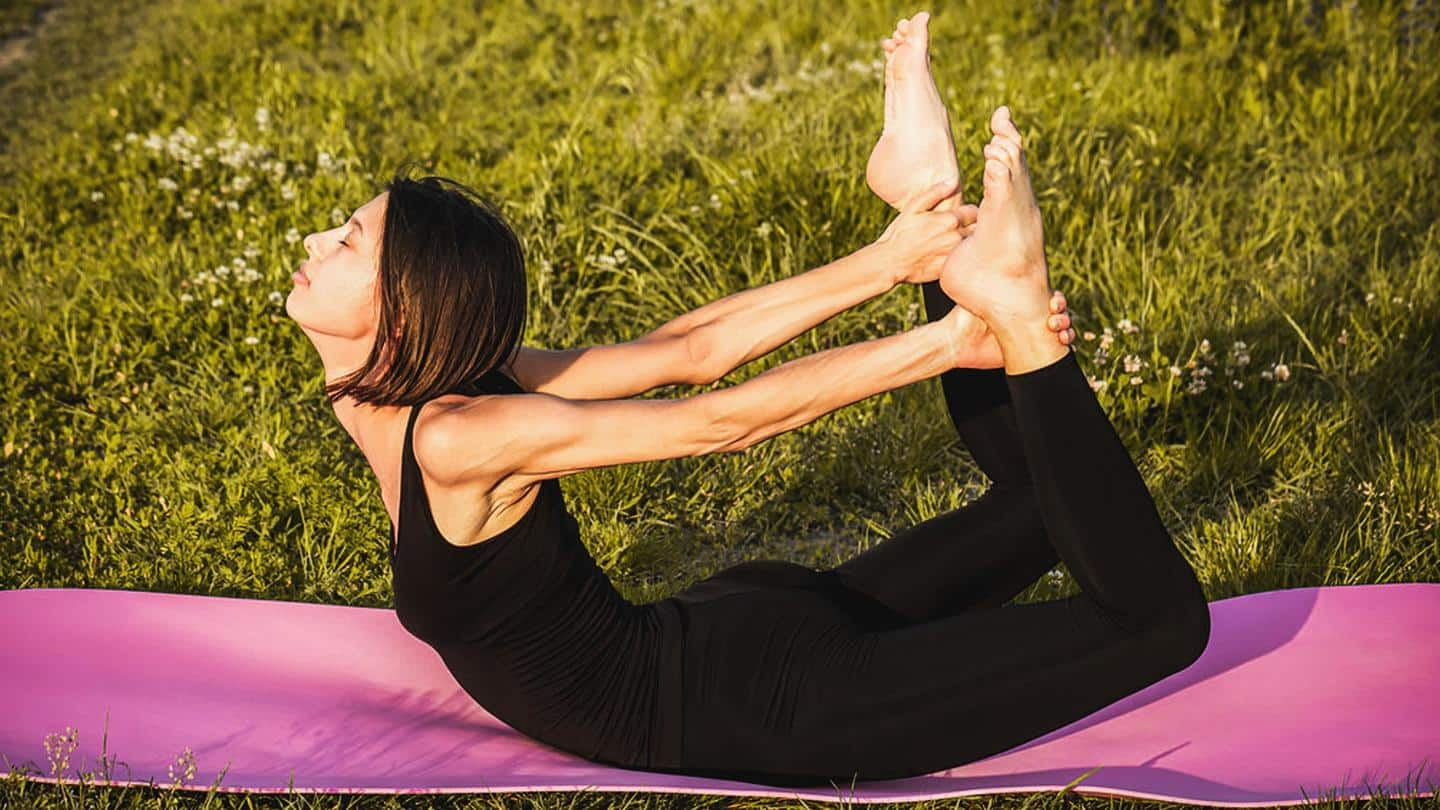
It can be hard to find the right pose for beginners when starting yoga. You want to feel strong and relaxed while doing yoga. Many poses can be difficult for beginners. However, there are some things that everyone can do to get maximum benefit from the practice. Listed below are three basic poses that are essential for a beginner's yoga workout. Once you are comfortable with these poses you can move on and learn more challenging poses.
One of the best aspects of beginner yoga is the connection with awareness and breath. Being in touch with your breath can improve your sleep quality, reduce stress and increase present-moment awareness. This simple guide is sure to make a huge difference in your practice. These are some ways to get started with yoga for beginners. Here are some tips to help you get started. After you have learned these tips, you will be ready for a class.
The shoulder stand is an excellent exercise for beginners. It improves the strength and flexibility of your shoulders and is the precursor to more complex poses. It reverses the effects caused by forward-rounded shoulder poses. Begin by pressing up with your hands, rolling your shoulder blades back, and extending your back. To maintain balance, turn your gaze up and focus on the ground. Soon you'll be able complete your first few attempts, and increase your strength.

A plank pose makes a great start to yoga. This variation is the plank. The goal is to keep your elbows in line with your hips. Although this pose can seem daunting at first it will improve your arm strength and strengthen your core muscles. In the coming weeks you will be able practice more advanced variations. If you're still not sure, book a private session or join a workshop.
Many options are available if you're searching for a beginner yoga class. Several YouTube channels offer these videos. These videos last seven to 40 minutes and offer beginner tips. Once you've learned the basic poses, you can take a 60-minute class. Find a teacher who is familiar and comfortable with your body. This will allow you to ensure you do a quality job. Classes are easy to comprehend and friendly.
Beginners should bring a mat and a towel to a yoga class. Most yoga studios provide props. But, it's best to look online to find the best. Yoga instructors can be helpful if you have questions or injuries. Private sessions are an option for those who don't like the idea of being in a large group. They can help you modify any pose, and prevent injury.
This type of class should not intimidate beginners. There's no need to be afraid of it. It is not difficult to do yoga, and you will reap the benefits. After a few weeks, you'll notice changes in your body. It is important that you follow the instructions of your instructor. Make sure to do your research, and get a mat. You'll get the most out your workouts if you have a proper mat.

Beginers should try as many different poses as they can in one day. The easiest and most familiar poses are the best. You'll be surprised at how many yoga positions you can learn. Just be sure to listen to your body and modify the poses if necessary. If you have a wrist injury, or you're worried about getting an injury, start slowly and work your way up. You'll soon be able practice these poses without difficulty once you have mastered them.
It is not necessary to be a beginner in yoga. To find the most comfortable pose, you can experiment with different poses. The best way to begin is with the most basic and simple poses. These are easy to do for all types of people. You can also practice yoga at the beach or while lying on a sandy beach. You should only attempt to do a few poses in either situation.
FAQ
What does butter have to do with men?
Butter is a great source of saturated fats. This fat is good for hair and skin health, as well as stronger bones.
Vitamin K, found in butter is an antioxidant that prevents bleeding from cuts. Vitamin K works together with vitamin C to prevent bruising.
Butter is also rich mineral, including calcium and phosphorous. These elements encourage stronger bones.
Butter has its drawbacks. Butter contains high amounts of cholesterol. A few studies have shown that too much cholesterol can increase the risk of developing coronary disease.
Also, butter is high in saturated fat, contributing to obesity and increased cholesterol levels.
But if butter is a must, you can spread it on bread and not dip it in soups or salads. Bread will absorb more oil than pasta or potatoes.
What kind of food should I avoid when trying to lose weight?
Avoid foods that contain trans fats. Trans fats can raise LDL (the unhealthy) cholesterol levels while lowering HDL levels (the good).
Trans fats can also be found in deep-fried food, fast food, packaged bakery goods, snack cakes, as well as other processed foods.
These unhealthy fats cause inflammation which leads to heart disease, diabetes, and other health problems.
Artificial sweeteners are also to be avoided. Artificial sweeteners have been linked to an increase in cancer risk.
These chemicals are found in many products, including soft drinks, candy bars, chewing gum, as well as candy bars. They appear in many other foods, including meat, poultry, fish, and eggs.
Artificial sweeteners can be saccharin or cyclamate, sucralose, sorbitol or aspartame.
The American Heart Association recommends that these chemicals be avoided as they can damage DNA.
How many calories do I need to eat each day?
This varies from person to person. On average, 2000 to 2500 calories are consumed per day. The factors that determine how many calories are needed for you include your gender, age, height, activity level, lifestyle, and gender.
Is Cardio Better Than Strength Training?
Both are equally great. Cardio is better if you are looking to build muscle faster.
Cardio burns more calories in a minute than strength training and more fat.
Although strength training can increase muscle mass, it is more difficult than cardio to do so.
How many times per week should I exercise
It all depends on how much time and what kind of exercise you like. A general guideline would be moderate-intensity aerobic exercise 3 - 5 days a week. It's important that you don't overdo it. Consistent exercise is essential to achieving maximum benefit from your workouts.
Which exercises are best suited for me?
It really depends on what kind of fitness goals you have. Some people concentrate on endurance activities such running, cycling, swimming. Others love lifting weights or using resistance bars. There are many exercise programs on the market today. Select the one that best suits your needs.
Do I need to exercise every day?
No! No! This means that you should be able to walk fast enough to feel slightly out of breath, or bike hard enough to sweat.
Statistics
- By John Thompson Take a whopping 38% off a set of PowerBlock Pros. (menshealth.com)
- According to the American Academy of Dermatology (AAD), men over 50 are at a heightened risk of developing it. (healthline.com)
- Get free shipping and 25% off today. (healthline.com)
- 10 pounds in a month is likely during a lean bulking phase, especially for beginners. (muscleandstrength.com)
- Candidates and applicants must pass all four tests at 70% (minimum level) to graduate from Basic Deputy U.S. Marshal (BDUSM) Training. (usmarshals.gov)
External Links
How To
How can I exercise to burn fat?
Exercise burns calories through increased metabolism and oxygen consumption.
Exercise at a moderate intensity to safely lose weight.
These are the top tips for burning fat while you exercise.
-
Do cardio exercises such as walking, swimming, jogging, cycling, running, or elliptical training.
-
Three times per week, exercise for 30 minutes.
-
If you want to lose more weight, add strength training to your routine.
-
Avoid intense workouts. It's possible to build muscle, but not lose it.
-
During exercise, drink plenty of water. Water helps to flush out toxins from the body and maintains proper hydration.
-
Choose low-fat protein shakes after working out. Protein shakes are great for your muscles and energy.
-
Smaller meals are better for you.
-
Don't skip breakfast! Skipping breakfast can lead to fatigue and sluggishness.
-
Take care of your mental health. Stressful situations can slow metabolism.
-
Keep a positive attitude. Studies show that people who believe they're overweight gain more weight than those who think they look pleasing.
-
Sleep enough. A lack of sleep makes it difficult to lose fat.
-
Be active. Move around at least once an hour.
-
Maintain a healthy diet. You will feel fuller longer if you eat right.
-
Find relaxation techniques. Relaxing doesn't mean your body releases stress hormones which cause muscle tissue to be destroyed.
A balanced diet provides all the nutrients necessary for growth and development.
You should eat six small meals per day rather than three large ones. This gives your body the time it needs to process what you've eat.
You need about 500 milligrams of calcium daily to maintain strong bones. Calcium is found in dairy products like yogurt, fortified milk beverages, orange juices, cereals and bread.
Calcium can be found in leafy green veggies, beans, tofu and nuts as well as seeds, nuts and cheese.
Vitamin D is necessary for the body to absorb calcium. Vitamin D is found in eggs yolk, fatty fish and fortified foods.
Vitamin E plays an important role in skin health. Vitamin E can also be found in vegetable oil, wheat germ oils, peanuts as well almonds, sunflower seeds and corn.
Your body needs zinc to maintain normal immune function and heal wounds. Zinc is found in oysters, legumes, meats, whole grains, and seafood.
Zinc deficiency may cause fatigue, loss appetite, depression, and impaired immunity.
Insulin resistance is caused by eating too much sugar, which can increase blood glucose levels. Insulin resistance leads directly to weight gain.
Insulin resistance is caused by high blood levels of free-radicals. Free radicals refer to molecules that contain unpaired electrons. They can damage cell membranes and other body parts.
Food additives, pesticides and herbicides, as well as preservatives, smoking and radiation are all sources of free radicals.
Free radical damage may lead to cancer, heart disease diabetes, arthritis, asthma and other conditions.
Eating a well-balanced diet with antioxidants is the best way to prevent free radical damage. Antioxidants protect against oxidative damage.
Vitamin C is found in citrus fruits and beta carotene is found in carrots.
Selenium, copper as well as manganese and zinc are some other antioxidant nutrients.
Selenium is known to protect cells from the oxidative damage that free radicals can cause. Selenium may be found in Brazil nuts as well tuna, liver and kidneys. It can also be found on shrimp, cod, turkey, beef lamb, pork, chicken, and other foods.
Copper protects your eyes, brain, eyes and red blood cell. Copper can be found in meat, shellfish, meat, and organ meats.
Manganese forms an essential part of bone structure. Manganese can also be found in oatmeal, brown rice, spinach and bananas.
Zinc helps with normal growth, reproduction, as well as wound healing. Zn can also be found in white fish, lean cuts of meat, poultry, and eggs.